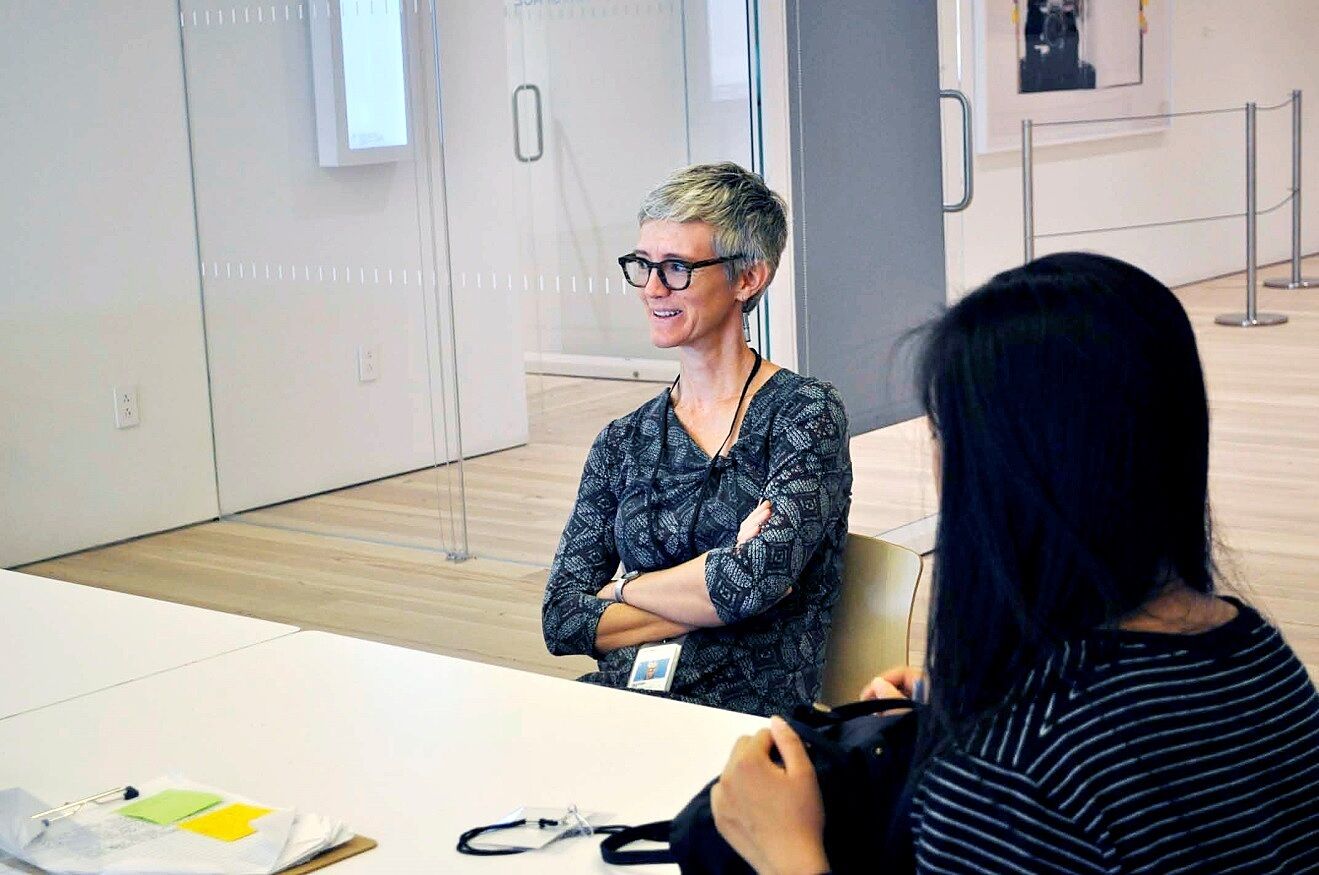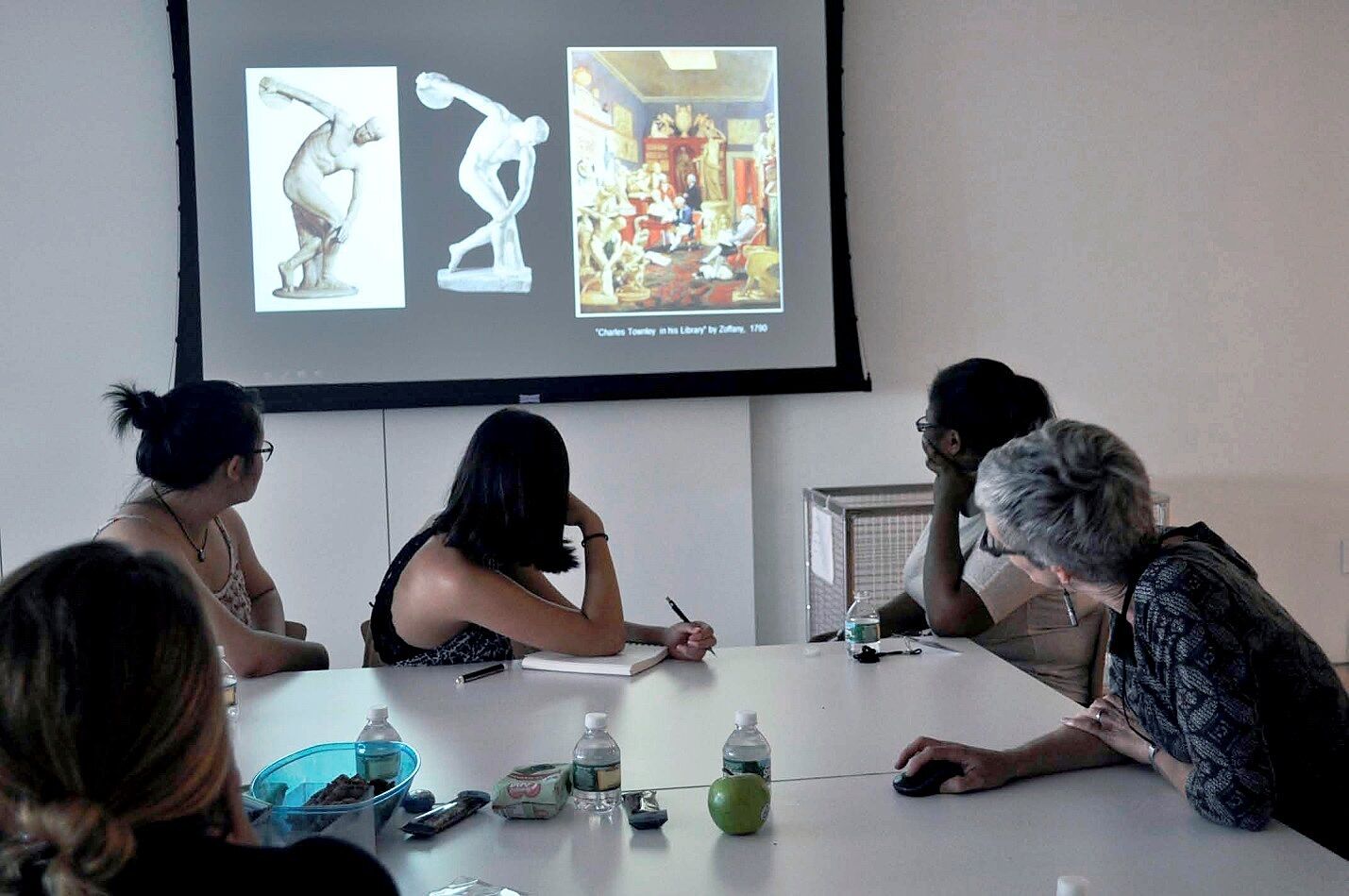Youth Insights teens meet Heather Cox, Conservation Coordinator and Matthew Skopek, Assistant Conservator
Jul 7, 2015
On July 7, Youth Insights Arts Careers participants met with Conservation Coordinator Heather Cox and Assistant Conservator Matthew Skopek. First, Cox gave us a presentation about the process of conserving art. In 2001, the Whitney founded a conservation department to preserve works of art in the Museum’s collection. Cox explained that conservators repair art that may be damaged by weather, time, leaks, or mishandling. Additionally, conservators may discover that an original painting was changed at a later date and so they work to restore the work to its original form.
In the presentation, Cox showed us images of ancient works of art and described the process of repairing faded frescoes or broken Greek statues. Even though the Whitney does not collect ancient art, they still have to restore damaged pieces such as paintings which have yellowed or faded over time. When restoring work, conservators make sure that all changes can be reversible and they document every stage of the process. Additionally, conservators sometimes reach out to specialists such as engineers, architects, and even acrobats, when trying to restore a work of art.
After speaking to Cox, we went to the Whitney’s Conservation Lab and met Assistant Conservator Matthew Skopek. Skopek brought us into a wood paneled room with natural light and nifty gadgets, including “elephant trunks” which act as air vacuums for solvent gas, and a paint consolidator that sprays paint in little droplets. Skopek showed us works of art which were in the process of being restored then took us to the Formal Lab which looked a lot like a chemistry lab. There was a sink to dispense deionized water, a sealed solvent storage, and a beautiful selection of color pigments. Next, we visited the Photo Studio which conservators use to document each stage of their process. In the Photo Studio there was also an infrared camera and an X-ray gun, both used to determine the elemental composition of paints and metals.
Skopek explained that in order to become a conservator, one should have a background in both the arts and sciences. Many conservators have art history or studio art degrees and have taken a lot of courses in chemistry. Conservators have often attended a specialized graduate program. Conservation work appears to be very detail oriented but highly rewarding. It seems like the perfect path for someone who is interested in both the arts and the sciences.
By Adam, YI Participant


